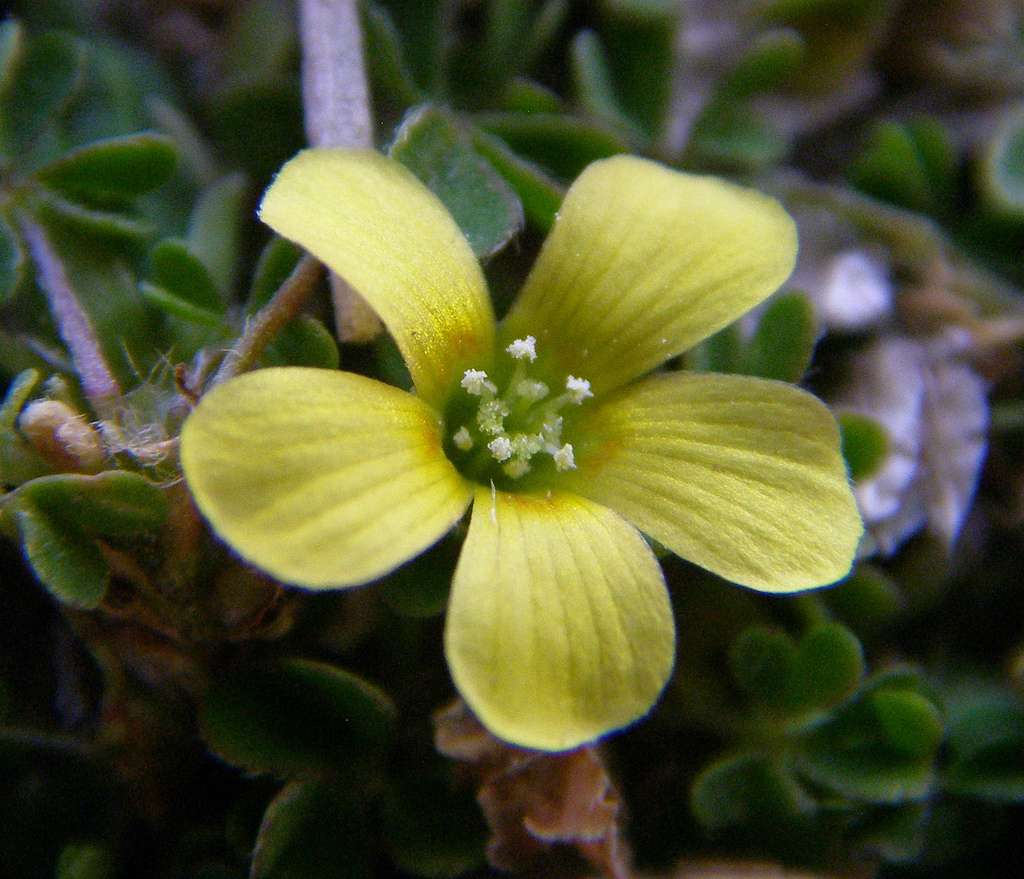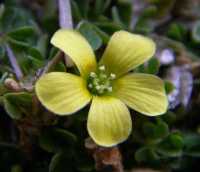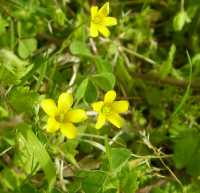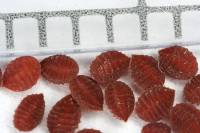Plant: perennial herb; stems prostrate or decumbent, to 30 cm long, often rooting at nodes
Leaves: cauline; leaflets 3, to 2 cm long, often maroon
INFLORESCENCE: 2-5-flowered; pedicels less than 1 cm long
Flowers: perfect, the petals clawed, connate at base; stamens 10; pistil 5-carpelled; styles 5, corollas yellow, 4-8 mm long
Fruit: FRUITS fleshy explosive capsules, cylindric, angled, 6-25 mm long. SEEDS 1.2-1.5 mm long, arillate
Misc: Common in lawns, gardens, disturbed places, greenhouses, and occasionally woodlands or grasslands:; 250-1300 m (1100-3900 ft); flowers all year
REFERENCES: Denton, Melinda. 1998 Oxalidaceae. J. Ariz. - Nev. Acad. Sci. 30(2): 115.
A weed introduced into greenhouses throughout the state. It has not often been collected, however, and the only specimen is in the herbarium of the University of Notre Dame, having been collected at Notre Dame.
Duration: Perennial
Nativity: Native
Lifeform: Forb/Herb
General: Delicate perennial, fleshy taproot, creeping stems that root at nodes, less than 30 cm long, more or less hairy.
Leaves: Cauline, petiole less than 7 cm, leaflets less than 2 cm, often maroon.
Flowers: Cyme, 2-5 flowered, pedicel less than 1 cm; sepals less than 4.5 mm, petals less than 8 mm, yellow.
Fruits: Explosively dehiscent capsule, cylindric, 6-25 mm.
Ecology: Found in disturbed spaces, occasionally in grasslands or woodlands from 1,000-4,000 ft (305-1219 m), flowers throughout the year.
Notes: Naturalized weed usually found in disturbed areas.
Ethnobotany: Taken as an infusion for hookworms, to stop vomiting, as a blood medicine, for mouth aid, sore throat, and as a food.
Etymology: Oxalis is from Greek oxys for sharp, sour, and corniculata means horned.
Synonyms: Oxalis albicans, others see Tropicos
Editor: SBuckley, 2010
Much like no. 2 [Oxalis dillenii Jacq.]; stems trailing and freely rooting; pubescence variously oriented; herbage tending to have a purplish cast; infl cymose when well developed, the mature pedicels erect or ascending; pubescence of the fr mostly short and spreading, sometimes with intermingled longer hairs; seeds wholly brown; 2n=24, 42, 48. A widely distributed weed in the tropics and abundant in s. U.S., in our range often a weed in greenhouses and occasional in gardens. (O. repens; Xanthoxalis c.)
Gleason, Henry A. & Cronquist, Arthur J. 1991. Manual of vascular plants of northeastern United States and adjacent Canada. lxxv + 910 pp.
©The New York Botanical Garden. All rights reserved. Used by permission.







